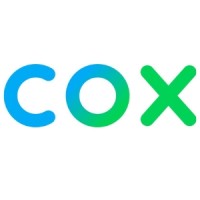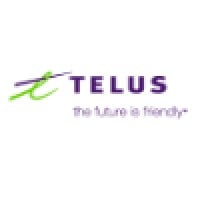Company Cyber Security Posture
NANA
NA Company Details
NA
NA
NA
NA
NA
NA
Scan still pending
NA
NA
Between 200 and 800
This score is AI-generated and less favored by cyber insurers, who prefer the TPRM score.
 NA Global Score
NA Global Score.png)

Company Scoring based on AI Models
| Model Name | Date | Description | Current Score Difference | Score |
|---|---|---|---|---|
| AVERAGE-Industry | 03-12-2025 | This score represents the average cybersecurity rating of companies already scanned within the same industry. It provides a benchmark to compare an individual company's security posture against its industry peers. | N/A | Between 200 and 800 |
Company Cyber Security News & History
| Entity | Type | Severity | Impact | Seen | Url ID | Details | View |
|---|
Company Subsidiaries

NA
Access Data Using Our API

Get company history
.png)
NA Cyber Security News
Telcel Database Allegedly Leaked: Privacy Concerns Surge in Mexico
A major data breach has reportedly exposed sensitive information from the database of Telcel, one of Mexico's largest telecommunications ...
1Password becomes the exclusive security partner at Red Bull Racing
A timely partnership for Red Bull. The team, which lost 3 sponsors during the winter break, is now breathing new life into this reshuffling of partnerships.
America Movil tackles cybercrime with Mexico’s National Guard
Scitum Chief Executive Cristina Hernandez Fernandez said: “We are convinced the only way to deal with cybercrime is by working together, and ...
Telecommunications Reform 2.0: How to Strengthen Mexico's ICT Sector beyond 2025
By enacting a new series of telecommunications reforms, Mexico would be able to take full advantage of the emerging opportunities in the ICT ...
Huawei Could Bring Geopolitical Risks to Mexico’s ICT: CSIS
A recent paper by the Center for Strategic and International Studies (CSIS) warns that Huawei's involvement in Mexico's information and communication ...
Accelerate financial inclusion through cross-border mobile transactions in Africa – Telecel Ghana CEO
Telecel Ghana CEO Patricia Obo-Nai has called on African governments, telecommunications companies, and financial service providers to ...
Here’s A List Of All Telecel USSD Codes In One Place
There are very few things as irritating as knowing there is a USSD code for something you want to do, but not knowing what that USSD code ...

NA Similar Companies

e& UAE
(Formerly etisalat UAE) For more than four decades, we have connected people and now we’ve evolved to become the digital telco of the future. Our mission is to grow, transform and excel as the region’s technology leader while enhancing digital customer experience and operation agility. e& UAE

Cox Communications
Cox Communications is committed to creating more moments of real human connection. We bring people closer to family and friends through technology that’s inspired by a culture that puts people first, and we’re always working to improve life in the communities we serve. Our world-class broadband appl

ethio telecom
We are Africa’s pioneering telecom company with more than 130 years of immense experience. Today, here we are standing bold and BIG yet for another golden milestone leading Ethiopia and Ethiopians towards a bright future. We are always on the front line to streamline the overall effort of our peop

TELUS Communications
TELUS (TSX: T, T.A; NYSE: TU) is a leading national telecommunications company in Canada, with $9.6 billion of annual revenue and 12 million customer connections including 6.5 million wireless subscribers, 4 million wireline network access lines and 1.2 million Internet subscribers and 170,000 TELUS

Spectrum
Charter Communications, Inc. (NASDAQ: CHTR) is a leading broadband connectivity company and cable operator with services available to more than 57 million homes and businesses in 41 states through its Spectrum brand. Over an advanced communications network, the company offers a full range of state-o

BTCC Call Center
Em breve uma nova página da BTCC Conexão Cliente. Acompanhe as as atualizações por aqui, no Linkedin. Show more Show less

Frequently Asked Questions
Explore insights on cybersecurity incidents, risk posture, and Rankiteo's assessments.
NA CyberSecurity History Information
How many cyber incidents has NA faced?
Total Incidents: According to Rankiteo, NA has faced 0 incidents in the past.
What types of cybersecurity incidents have occurred at NA?
Incident Types: The types of cybersecurity incidents that have occurred include .
Additional Questions
What Do We Measure?
















Every week, Rankiteo analyzes billions of signals to give organizations a sharper, faster view of emerging risks. With deeper, more actionable intelligence at their fingertips, security teams can outpace threat actors, respond instantly to Zero-Day attacks, and dramatically shrink their risk exposure window.
These are some of the factors we use to calculate the overall score:
Identify exposed access points, detect misconfigured SSL certificates, and uncover vulnerabilities across the network infrastructure.
Gain visibility into the software components used within an organization to detect vulnerabilities, manage risk, and ensure supply chain security.
Monitor and manage all IT assets and their configurations to ensure accurate, real-time visibility across the company's technology environment.
Leverage real-time insights on active threats, malware campaigns, and emerging vulnerabilities to proactively defend against evolving cyberattacks.




